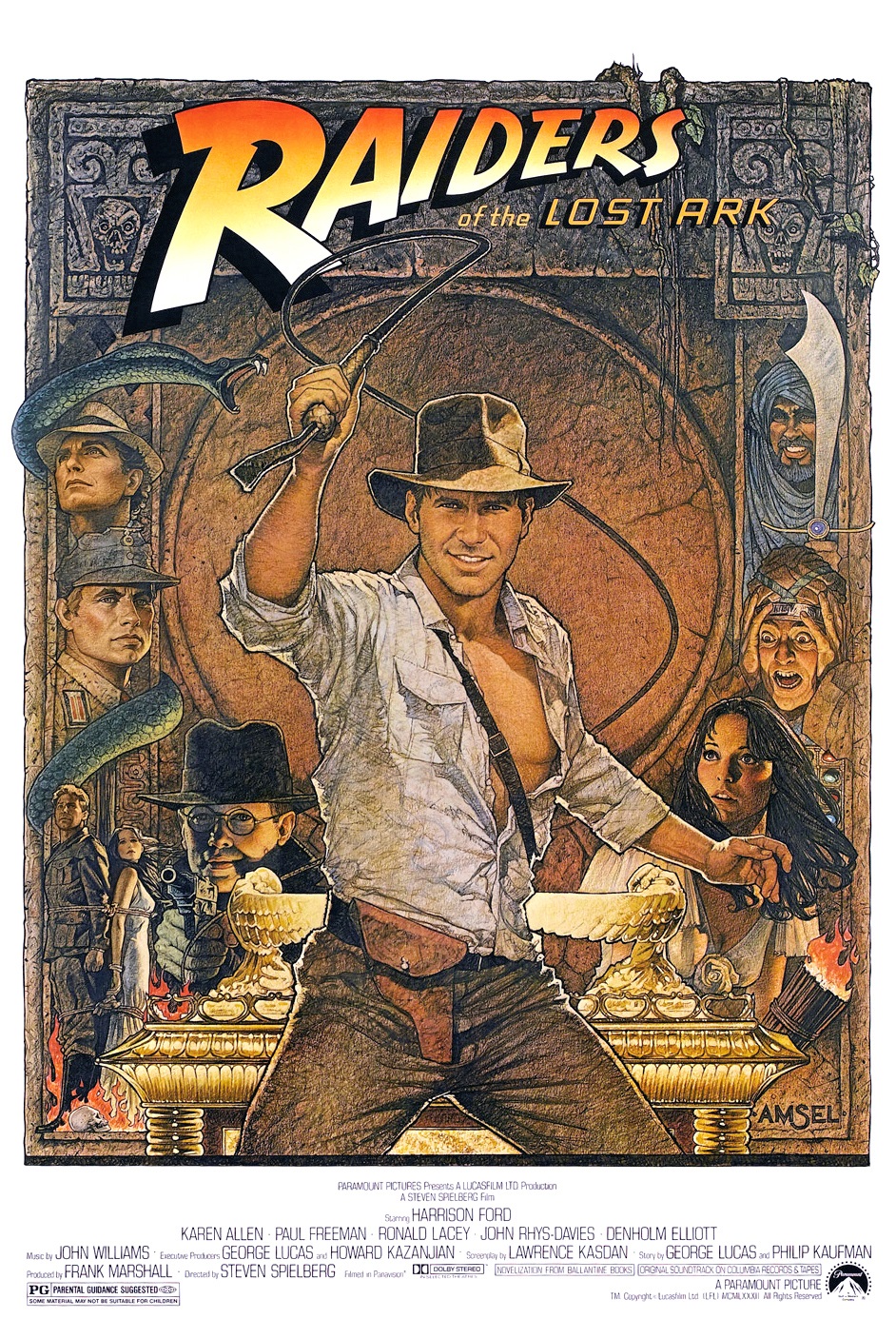Created by Steven Spielberg and George Lucas, the “Indiana Jones” franchise is one of the most popular adventure movie series in film history. The ongoing saga of the fearless archaeologist and his quests has grossed more than $2 billion internationally over the past four decades and solidified Harrison Ford’s status as a legendary actor. While four of the five films have seen box office success, they vary in cast, style and quality.
“Raiders of the Lost Ark” (1981)
Set in 1936, this fast-paced, humor-filled movie is loaded with action, suspense and mystery. The adventure is pedal-to-the-metal from the very first scene, when Jones braves an ancient temple in Peru to find a golden idol. His antics include avoiding flying darts and a giant, rolling boulder, which sets the tone for the entire series. The action continues without letup; Indiana Jones travels from Peru to Nepal, and then Egypt to find the Ark of the Covenant, a sacred Judeo-Christian relic with supernatural powers. He teams with Marion Ravenwood (Karen Allen), a bartender who possesses a mysterious artifact crucial to the plot, and together they fight Jones’ rival archaeologist, the villainous Nazi stooge Rene Belloq (Paul Freeman). The film’s climax sets a high bar for all subsequent historical action movies — including the “Indiana Jones” sequels.
“Indiana Jones and the Temple of Doom” (1984)
This movie serves as a prequel to “Raiders of the Lost Ark,” taking place in 1935, one year before the first film. As such, we are introduced to new characters like Willie Scott and Short Round, played by Oscar-winning actor Ke Huy Quan. They travel with Jones to India, where they help a small village find the Sankara stones which have been stolen by an ancient Thuggee cult.
The three characters find the cult, ruled by the nefarious Mola Ram, at a nearby temple, where swordplay and whip-lashing ensues. Jones’ fight with Ram eventually leads to a high-speed chase with mine carts and plenty of close calls. The finale may even out-shine that of the first film. As a side note, this movie helped inspire the PG-13 rating for films, as it did not quite fit in either the PG or R rating.
“Indiana Jones and the Last Crusade” (1989)
The original trilogy’s last movie is as enthralling as the previous installments. It opens with River Phoenix playing a young Indiana Jones, as we dive into Jones’ origin story, including his fear of snakes and how he acquired his iconic whip. As we return to an adult Indy, John Rys-Davies returns from the first movie as Sallah and Sean Connery plays Indiana’s father, Henry Jones Sr.
Filled with the familiar trademark action and mystery, “The Last Crusade” follows Indiana Jones’ attempt to find his missing father and the centuries-lost Holy Grail. The movie features seat-gripping visuals, such as Indiana Jones and Henry Jones tied to chairs while a fire engulfs the castle, and Indiana fighting the evil Nazi Colonel Ernst Vogel (Michael Byrne) on a tank before it falls off a cliff. It also featured the first digital composite of live images ever made for a scene when a character ages into bones and dust right before the audience’s eyes.
“Indiana Jones and the Kingdom of the Crystal Skull” (2008)
The fourth movie in the franchise holds a special place in my heart. “Kingdom of the Crystal Skull” introduced me to Indiana Jones, and I have loved the characters and world ever since. The adventure continues 19 years after “The Last Crusade,” when Lucas convinced Spielberg to have another go. Indiana Jones searches for a telepathic crystal skull in Peru while playing cat-and-mouse with Soviet KGB agents led by Irina Spalko (Cate Blanchett). The film faced criticism over its use of CGI and a plot involving aliens, but it still manages to capture the signature Indiana Jones adventure, suspense and humor.
“Indiana Jones and the Dial of Destiny” (2023)
This is the only film in the franchise that Spielberg did not direct, and the only one that didn’t achieve box office success. Due to Harrison Ford’s age, Jones engages in very little action. The film does, however, showcase quality de-aging technology at the beginning when Indiana Jones revisits nostalgic action on a train.
Characters like Sallah and Marion Ravenwood return, but they don’t play major roles. Indiana Jones and his goddaughter find themselves in a race to locate the Antikythera mechanism before the villain Jurgen Voller (Mads Mikkelsen), a Nazi trying to go back in time, can change the outcome of World War II. Overall it’s a good movie, but lackluster action and mystery keep it from being among the best in the series. It best serves as a tribute to prior films.





